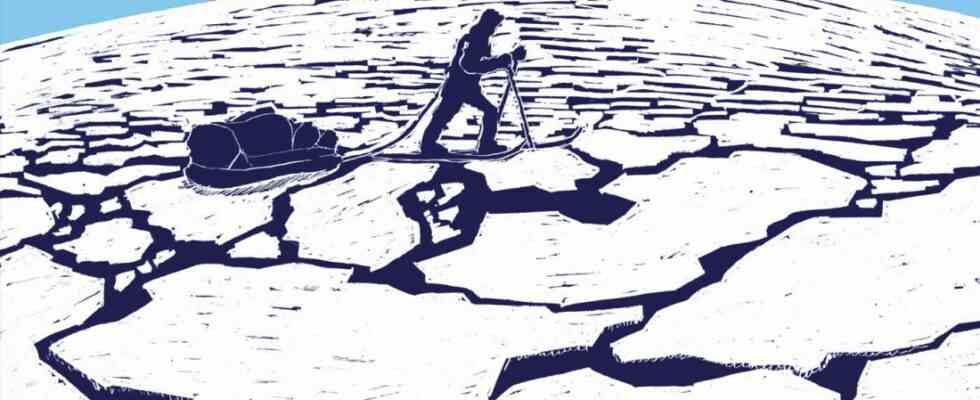For Wojciech Moskal, the question of whether it would be better to see a dentist because of his pain does not arise. In May 1995, Moskal was on his way to the North Pole with his friend Marek Kamiński when he developed a toothache. But where he is, he’d sooner see a dozen polar bears than a doctor. He has no choice but to pull the broken tooth himself before he would contract a dangerous infection in the middle of the largely deserted Arctic. To do this, Wojciech Moskal uses a multifunctional tool that also includes pliers. Anyone embarking on a polar adventure should not be squeamish.
Did the aching tooth have something to do with all the chocolate that Moskal and Kamiński ate during their expedition? It’s hard to say, in any case the author Agata Loth-Ignaciuk and her husband, the illustrator Bartłomiej Ignaciuk, don’t go into detail about it in their book “Insevere Eis”. Which is surprising because they are very interested in the details of polar expeditions. That means: for the details of two very special expeditions. Martin Kamiński reached both the North and South Poles within a year – 1995. He became famous for it in his native Poland.
Ignaciuk’s illustrations in cold blue, black, white and orange subvert the heroic pose
Agata Loth-Ignaciuk and Bartłomiej Ignaciuk would like to know how something like this actually works: Walking in pairs to the North Pole and even walking to the South Pole alone. Without dogs or even a snowmobile. But on foot, pulling everything you need along the way behind you. When Marek Kamiński trains for his expeditions, he does strange things: he drags car tires behind him when he goes for a run, and tries out in his garden whether he will be able to put up his tent in polar clothing. He doesn’t care what his neighbors think of him.
Agata Loth-Ignaciuk, Bartłomiej Ignaciuk: Into the eternal ice. North Pole and South Pole in one year. Gerstenberg Verlag, Hildesheim 2022. 96 pages, 18 euros.
(Photo: Gerstenberg)
Kamiński wants to be prepared. And yet he and Moskal often have to improvise: They had to fix a broken shoe, think about how best to cross cracks in the ice, or even pull a tooth. You have to be clear about other things beforehand, for example how to find your way in the eternal ice. That you are not on solid ground in the Arctic and that you have to factor in the ice drift in your stage plans.
Bartłomiej Ignaciuk has deepened these instructive explanations with ice cold blue, black, white and orange illustrations. They like to dodge the heroic pose, show Kamiński and Moskal performing ridiculous-looking but vital exercises or listlessly stuffing themselves with the same dishes over and over again. In one of the illustrations, a polar bear amusedly looks at a sign warning of its own kind. However, what “In the eternal ice” always takes very seriously is the passion with which Marek Kamiński has turned his ambitious goals into reality.

